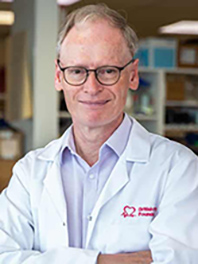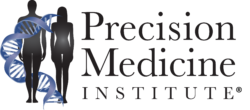New approach to genetic testing for cardiomyopathies improves early detection of genetic heart disease
Advances in precision cardiology testing have improved the ability to identify patients who are at risk for developing cardiomyopathies. These advancements will allow healthcare leaders to expand heart health screening services in their communities and at the same time grow their practices.
Cardiomyopathies are diseases that affect the heart muscle, making it more difficult for the heart to adequately supply the body with the circulation it needs. Current testing methods primarily focus on testing for specific disease subtypes.
However, using a no-charge, sponsored genetic testing program at a single testing site, researchers from Northwestern Medicine found a new method of screening for cardiomyopathies that they believe is more effective at identifying at-risk patients. The approach used a large genetic panel to screen for both cardiomyopathies and arrhythmias (abnormal heart rhythms).
Researchers Find Higher Diagnostic Yield in Larger Gene Panel Testing
“It turns out there is genetic crossover in which the same gene can be linked to both cardiomyopathy and arrhythmias, so ordering a larger test improves the odds of getting a result,” said Elizabeth McNally, MD, PhD, in a Northwestern Medicine press release. “For some of the genetic cardiomyopathy subtypes, patients can get arrhythmias much earlier in the course of disease, so we use device management more readily than we would in cases without these specific genetic diagnoses. McNally is the senior author of the study, published in JAMA Cardiology in early August 2022.
The cohort study included 4,782 patients with a suspected genetic cardiomyopathy or arrhythmia who were referred for genetic testing by 1,203 clinicians, according to the related journal article, titled, “Assessment of the Diagnostic Yield of Combined Cardiomyopathy and Arrhythmia Genetic Testing.”
This paper describes how next-generation sequencing gene panels were used to simultaneously test for both sequence and exon-level copy number variants. Up to 150 genes associated with cardiomyopathies or arrhythmias were sequenced, but the primary panel included 67 genes with established associations with cardiomyopathies and arrhythmias. Variants were classified using Sherloc, a variant interpretation framework built on guidelines from the American College of Medical Genetics and Genomics and the Association for Molecular Pathology.
“The bigger surprise is that people with certain arrhythmias are at risk for getting cardiomyopathy over time,” McNally explained. “That means we have to watch these patients differently or even treat them with medications differently because of the risk for getting cardiomyopathy.” The genetic link between these two conditions improved the ability to recognize individuals at risk for developing cardiomyopathies.
“Heart failure and arrhythmia conditions are often thought of as separate disorders, but these findings, along with some other recent reports, have really highlighted how intertwined arrhythmias and cardiomyopathies are, and having one increases the chances of getting the other,” McNally continued. “Sometimes a person will show up with an irregular heart rhythm, but this is actually a sign that the heart muscle is at risk, and we can use this information to treat patients more effectively.”
Ultimately, comprehensive genetic testing for cardiomyopathies and arrhythmias was shown to increase the identification of those who were at risk for cardiomyopathies by 11% when compared to existing genetic testing methods, according to the published report. “Although the chance of finding variants of uncertain significance increases as more genes are tested, the benefits of identifying more cases of genetic disease outweigh the challenges of higher detection of variants of uncertain significance,” concluded Northwestern researchers.
Ambitious Goals for Gene Editing Genetic Cardiomyopathies

Enhancements in the ability to detect cardiomyopathies comes at a time when precision medicine research on this set of diseases is expanding. An international research project recently launched with the goal of treating genetic-based cardiomyopathies by rewriting defective DNA.
The CureHeart project, an international initiative that includes researchers from the UK, US, and Singapore, has recently been awarded a £30m grant (US $35 million) from the British Heart Foundation to develop new treatments for cardiomyopathies. Researchers want to see if they can switch off or edit the genes that can cause certain cardiomyopathies.
“This is our once-in-generation opportunity to relieve families of the constant worry of sudden death, heart failure and potential need for a heart transplant,” said Hugh Watkins, FRS, FRCP, FMedSci, the lead investigator of the CureHeart project, in an interview with The Guardian. “After 30 years of research, we have discovered many of the genes and specific genetic faults responsible for different cardiomyopathies, and how they work. We believe that we will have a gene therapy ready to start testing in clinical trials in the next five years.”
Using precision medicine treatments for cardiomyopathy could enable this disease to be treated before it even occurs. “We may be able to deliver these therapies in advance of disease, in individuals we know from genetic testing are at extraordinary risk of having disease development and progressing to heart failure,” explained Christine Seidman, MD, co-lead of the CureHeart project. “Never before have we been able to deliver cures, and that is what our project is about. We know we can do it and we aim to get started.”
Gauging Demand for Genetic Testing in Your Community
As innovative undertakings like CureHeart begin, screening for cardiac conditions is already garnering increased attention. An initiative by Monash University in Australia is offering free genetic screening to at least 10,000 people between the ages of 18-40 years old. This screening will test for both cancer and cardiac conditions.
“We hope to identify those at risk while they are young and healthy, not after the fact, and empower them to make more informed decisions about their health,” said Paul Lacaze, PhD, in a Monash University statement. “For some people, this could save their lives through early detection and prevention of cancer and heart disease. This will also save considerable health system costs in Australia through prevention.
“Providing genetic testing based on family history alone is not enough,” Lacaze continued. “Up to 90 percent of those at high risk in the general population are not identified by current family history-based testing. Most people don’t find out about their genetic risk until it’s too late, like after an incurable cancer or heart attack is diagnosed. We want to change that.”
Precision medicine has long been an emerging medical approach in cancer care, but new advances and initiatives in cardiology are making it an increasingly valuable tool for evaluating and treating heart-related conditions. Forward-looking healthcare leaders will recognize the opportunities that precision cardiac medicine provides to recognize and treat heart disease before it occurs.
—Caleb Williams
Related Information:
Bigger Is Better for Genetic Tests That Check for Cardiomyopathy, Arrhythmias
Assessment of the Diagnostic Yield of Combined Cardiomyopathy and Arrhythmia Genetic Testing
World-First Preventative DNA Screening for Cancer and Heart Disease Risk
Genetic Heart Conditions Could Be Cured for First Time in ‘Defining Moment’
A Revolution Is Coming in Heart-Disease Treatment
